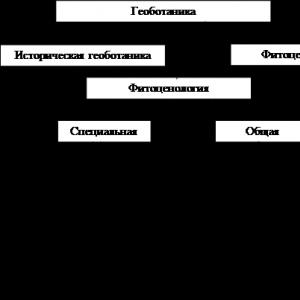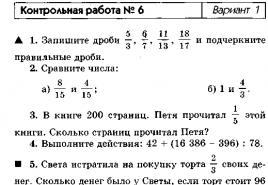Logic tasks on the topic the sum of the angles of a triangle. “Solution of problems on the application of the theorem on the sum of the angles of a triangle and the theorem on the outer angle of a triangle
To use the preview of presentations, create yourself a Google account (account) and log into it: https://accounts.google.com
Slide captions:
7th grade. Solving problems. "The sum of the angles of a triangle. Outside angle of a triangle"
8 9 10 11 12 14 15 16 17 18 20 21 22 23 24 1 2 3 4 5 6 13 19 7 ... according to ready-made drawings
The theorem on the sum of the angles of a triangle. A B C The sum of the angles of a triangle is 180 0.
The outer corner of the triangle. Property. A B C The outer angle of a triangle is equal to the sum of two angles of a triangle that are not adjacent to it. D
Properties isosceles triangle... А М В К С N Angles at the base. Median, height, bisector. In an isosceles triangle, the angles at the base are equal. In an isosceles track, the bisector drawn to the base is the median and the height.
Medians, bisectors and heights of triangles. A K B M C R O N L S H Median Bisector Height
B A O C Adjacent corners
Equilateral triangle. A B C In an equilateral triangle, all sides are EQUAL and all angles are EQUAL.
1. Answer Hint (3) Properties of an isosceles triangle Find the angles of an isosceles track if the angle at the base is 2 times the angle opposite the base. The sum of the angles of the triangle C A B x 2x 2x
2. Answer Hint (3) Outside corner of a triangle Find the angles of an isosceles track if the angle at the base is 3 times less than the outside angle adjacent to it. The sum of the angles of the triangle C A B x 3x The property of the outer angle of the triangle
3. Answer 50 0 C A B Given: ∆ ABC, AB = BC, AD - bisector, Find: Hint (4) Properties of isosceles triangle Bisector of triangle D? Sum of the angles of a triangle Adjacent angles
4. Answer 7 5 0 К С Given: ∆ CDE, DK is the bisector, Find the angles of the triangle CDE. Hint (3) Consider ∆ CDK Triangle bisector D Sum of triangle angles 28 0 E
5 . Answer 50 0 M A Given: ∆ ABC, BM - height, Find the angle CBM. Hint (3) Properties of an isosceles triangle Height of an isosceles triangle B Sum of angles of triangle C
6. Answer 12 0 0 C A B Given: ∆ ABC, AB = BC = 5 cm, Find: AC Hint (4) Properties of an isosceles triangle Outer corner of a triangle Adjacent angles D Equilateral triangle
Solving problems based on ready-made drawings. It is necessary to write down the condition of the problem according to the figure and answer the question. There are no prompts in tasks. 8 9 1 0 7 1 1 1 2 14 15 1 6 13 1 7 1 8 20 21 22 23 24 19
7. Answer 3 0 0 A Find: B C?
8. Answer 4 0 0 A Find: B C D? ? ?
9 . Answer 30 0 D A BC = AC Find: B C?
10. Answer 110 0 A Find: B C 40 0? ?
Lesson objectives:
- to acquaint students with the theorem on the sum of the angles of a triangle, to classify triangles by angles;
- consider the application of the theorem to solving problems.
Lesson Objectives:
Educational:
- formulate and consider the plan of the proof of the theorem on the sum of the angles of a triangle;
- to classify triangles by angles;
- consider the problem of applying the proven statement.
Developing: the ability to analyze, generalize the knowledge gained, develop mathematical speech.
Educational:
- bring up cognitive activity, culture of communication;
- foster respect for the historical heritage in the field of mathematics.
Lesson type: partially exploratory.
Method: research using theoretical knowledge.
Equipment:
- multi-projector;
- presentation;
- Handout, task - a card for working out the theorem when solving problems.
Interdisciplinary connections: history.
The use of health-saving technologies in the lesson:
- change of activities;
- development of auditory and visual analyzers in every child.
Lesson plan:
1. Organizing time.
Hello, sit down. (Presentation. Slide 1)
Yes, the path of knowledge is not smooth
But we know with school years,
There are more riddles than clues
And there is no limit to the search.
2. Updating knowledge.
Let's remember everything that is needed in today's lesson.
DBE - expanded.
Slide 2.
2) Properties of an isosceles triangle. Find 1.

1 = 70 °
Formulate the opposite of the isosceles triangle property.
3) properties of parallel lines.
Slide 4

2 = 43 ° 1 = 60 °
- Like criss-crossing corners.
4) Introductory task. Slide 5ABF - isosceles
B = 30 °, AF BD,BD - bisector CBF
sum of angles ABF


Was the sum of the angles ABF equal to 180 ° by accident, or does any triangle possess this property? ( Any triangle has a sum of angles equal to 180 °.)
This statement is called the triangle sum theorem.
So, the topic of the lesson: The sum of the angles of a triangle. Slide 6, 7, 8.
Often a preschooler also knows
What is a triangle.
And how can you not know ...
But it's a completely different matter -
Very fast and skillful
The magnitudes of all angles
Find out in the triangle.
To find quickly and correctly the angles in any triangle, you need to consider the theorem on the sum of all the angles of a triangle. This is what we will do now in the lesson.
Goals:
- consider the outline of the proof of the theorem on the sum of the angles of a triangle;
- to classify triangles by angles;
- learn to apply the theorem on the sum of the angles of a triangle when solving problems.
- Historical background on the "sum of the angles of a triangle" theorem.
The property of the sum of the angles of a triangle was empirically established, that is, it was established empirically, probably back in Ancient egypt, however, the information that has come down to us about its various proofs refers to a later time. The proof set forth in modern textbooks is contained in Proclus's commentary on Euclid's Beginnings. Slides 9,10.
The angles of a triangle add up to 180 °
Prove:
A + B + C = 180 °
Proof plan:
Because in the condition of the theorem there is not enough data for the proof, then the question arises of introducing an auxiliary element (an additional construction is the construction of a straight line). The same situations arise when there is not enough data to solve problems.
a) Construct DE AC through vertex B ABC
b) Mark 1, 2, 3.
2) Prove that A = 1, C = 3
A = 1 as criss-crossing angles at DE AC,
AB - secant.
3) Prove that 1 + 2 + 3 = 180 °;
hence, A + 2 + C = 180 °
DBE - expanded
So 1 + 2 + 3 = 180 °
And since as criss-crossing angles at DE AC
Hence, A + 2 + C = 180 °
The theorem is proved.
4) What triangles are distinguished on the sides? (Isosceles, equilateral, versatile.)
Triangles are classified not only by the sides, but also by the corners. Let's talk about the corners first.
- What is an angle? (An angle is a shape formed by two rays emanating from the same point. The rays are called the sides of the angle, and the point is the apex of the angle.)
- What is the right angle? (An angle of 90º.)
- What angle is called unfolded? (An angle of 180º.)
- What angle is called acute? (Angle less than 90º.)
- What angle is called obtuse? (Angle greater than 90 ° but less than 180 °.)
Thus, the corners are sharp, straight, obtuse, unfolded.
Draw three corners in your notebook: sharp, blunt, and straight. Complete the drawing to the triangle.
- What needs to be done for this? (Take a point on the sides of the corner and connect them.)
- What are the triangles? (Obtuse, rectangular, acute.)
Slide 13–16.
Oral test: Slide 17 the test is taken - "Lesson development on geometry grade 7, Gavrilova NF, M .: VAKO, 2006".
1) In a triangle ABC, A = 90 °, while the other two angles can be:
a) one is sharp and the other can be straight;
b) both are sharp;
c) one is sharp and the other can be blunt.
2) In a triangle ABC, B is obtuse, while the other two angles can be:
a) only sharp;
b) sharp and straight;
c) sharp and dull.
3) An acute-angled triangle may contain:
a) all corners are sharp;
b) one obtuse and 2 acute angles;
c) one straight line and 2 acute angles.
Checking by Slide 18, 19, 20.
5) Cards with the task are issued. The time for self-fulfillment is assigned - 7 minutes. Then it is verified through multimedia.
Practicing skills using ready-made drawings: Slide 21-30.
Find 1, 2.


6)Lesson conclusion:
- By types of angles are considered (acute-angled, obtuse, right-angled triangle).
- What is the sum of the angles in any triangle (The sum of the angles in any triangle is 180 °).
- We will also consider this theorem when solving problem No. 228 (a)
Recorded: House. task: Ch. IV §1 p. 30 No. 223 (a; b), 228 (b).
No. 228 (a). Consider: 2 cases of solving the problem:

If there is time test.
The materials on this page are copyrighted. Copying for posting on other sites is allowed only with the explicit consent of the author and the site administration.
The sum of the angles of a triangle.
Smirnova I.N., teacher of mathematics.
Open Lesson Information Leaflet.
The purpose of the methodological lesson: to acquaint teachers with modern methods and techniques of using ICT tools in various forms learning activities.Lesson topic: The sum of the angles of a triangle.
Lesson name:"Knowledge is only knowledge when it is acquired by the efforts of one's thought, and not by memory." L. N Tolstoy.
Methodological innovations that will form the basis of the lesson.
The lesson will show the methods scientific research using ICT (using mathematical experiments as one of the forms of obtaining new knowledge; experimental verification hypotheses).
Overview description of the lesson model.
- Motivation to study the theorem.
- Disclosure of the content of the theorem in the course of a mathematical experiment using the educational and methodological set "Living Mathematics".
- Motivation for the need to prove the theorem.
- Work on the structure of the theorem.
- Search for a proof of the theorem.
- Proof of the theorem.
- Strengthening the statement of the theorem and its proof.
- Application of the theorem.
Geometry lesson in grade 7
according to the textbook "Geometry 7-9"
on the topic: "The sum of the angles of a triangle."
Lesson type:
a lesson in learning new material. Lesson objectives:
Educational: prove the theorem on the sum of the angles of a triangle; to get skills of working with the program "Living Mathematics", the development of intersubject connections.
Developing: improving the skills to consciously carry out such methods of thinking as comparison, generalization and systematization.
Educational: fostering independence and the ability to work in accordance with the planned plan.
Equipment: multimedia cabinet, interactive board, cards with a plan practical work, the program "Living Mathematics".
Lesson structure.
- Knowledge update.
- A mobilizing start to the lesson.
- Problem statement formulation in order to motivate the study of new material.
- Statement of the educational problem.
- Practical work "The sum of the angles of a triangle".
- Proof of the theorem on the sum of the angles of a triangle.
- Solving a problematic task.
- Solving problems based on ready-made drawings.
- Summing up the lesson.
- Homework setting.
During the classes.
- Knowledge update.
Lesson plan:
- Experimentally establish and put forward a hypothesis about the sum of the angles of any triangle.
- Prove this assumption.
- To consolidate the established fact.
- Formation of new knowledge and methods of action.
- Practical work "The sum of the angles of a triangle".
Students sit down at computers and are given cards with a plan of practical work.
Practical work on the topic "The sum of the angles of a triangle" (sample card)
Print cardStudents hand over the results of practical work and sit down at their desks.
After discussing the results of practical work, a hypothesis is put forward that the sum of the angles of a triangle is 180 °.
Teacher: Why can we not yet say that the sum of the angles of absolutely any triangle is 180 °.
Student: It is impossible to perform absolutely accurate constructions, nor to make absolutely accurate measurements, even on a computer.
The statement that the sum of the angles of a triangle is 180 ° applies only to the triangles we have considered. We cannot say anything about the other triangles, since we did not measure their angles.
Teacher: It would be more correct to say: the triangles we have considered have a sum of angles approximately equal to 180 °. To make sure that the sum of the angles of a triangle is exactly 180 ° and, moreover, for any triangles, we also need to carry out the appropriate reasoning, that is, to prove the validity of the statement suggested to us by experience. - Proof of the theorem on the sum of the angles of a triangle.
Students open exercise books and write down the lesson topic "The sum of the angles of a triangle."
Work on the structure of the theorem.
To formulate the theorem, answer the following questions:- What triangles were used in the measurement process?
- What is included in the condition of the theorem (what is given)?
- What did we find when measuring?
- What is the conclusion of the theorem (what needs to be proved)?
- Try to formulate a theorem about the sum of the angles of a triangle.
Construction of a drawing and a short statement of the theorem
At this stage, students are asked to make a drawing and write down what is given and what needs to be proved.
Construction of a drawing and a short statement of the theorem.
Given: Triangle ABC.
Prove:
ட A + ட B + ட C = 180 °.Finding a proof of the theorem
When looking for a proof, one should try to expand the condition or conclusion of the theorem. In the theorem on the sum of the angles of a triangle, attempts to unfold the condition are hopeless, so it is reasonable to engage with the students to unfold the conclusion.
Teacher: What statements refer to angles, the sum of which is 180 °.
Student: If two parallel lines are intersected by a secant, then the sum of the inner one-sided angles is 180 °.
Sum adjacent corners is equal to 180 °.
Teacher: Let's try to use the first statement to prove it. In this regard, it is necessary to build two parallel lines and a secant, but it is necessary to do this so that the largest number of angles of the triangle become internal or enter into them. How can you achieve this?Search for a proof of the theorem.

Student: Draw a straight line through one of the vertices of the triangle parallel to the other side, then side will be a secant. For example, through the top B.
Teacher: What are the inner one-sided corners formed at these straight lines and secant.
Student: Angles DBA and BAC.
Teacher: Which angles add up to 180 °?
Student:ட DBA and ட BAC.
Teacher: What about the ABD angle?
Student: Its value is equal to the sum of the angles ABC and SVK.
Teacher: What statement are we missing to prove the theorem?
Student:ட DBC = ட ACB.
Teacher: What are these angles?
Student: Internal criss-crossing.
Teacher: On what basis can we say that they are equal?
Student: By the property of cross-lying internal angles with parallel straight lines and a secant.As a result of the search for a proof, a plan for the proof of the theorem is drawn up:
Outline of the proof of the theorem.
- Draw a straight line through one of the vertices of the triangle, parallel to the opposite side.
- Prove the equality of the interior intersecting angles.
- Write down the sum of the inner one-sided angles and express them in terms of the angles of the triangle.
Proof and its record.

- Let's run BD || AC (axiom of parallel lines).
- ட 3 = ட 4 (since these are criss-crossing angles for BD || AC and secant BC).
- ட A + ட ABD = 180 ° (since these are one-sided angles with BD || AC and secant AB).
- ட A + ட ABD = ட 1 + (ட 2 + ட 4) = ட 1 + ட 2 + ட 3 = 180 °, as required.
Strengthening the statement of the theorem and its proof.
To master the formulation of the theorem, students are invited to complete the following tasks:
- State the theorem we just proved.
- Highlight the condition and conclusion of the theorem.
- To which figures does the theorem apply?
- Formulate a theorem with the words "if ... then ...".
- Practical work "The sum of the angles of a triangle".
- Application of knowledge, formation of skills and abilities.
Methodical development of a geometry lesson in grade 7 on the topic: "Solving problems for the application of the theorem on the sum of the angles of a triangle and the theorem on the outer angle of a triangle" lesson - workshop Glukhova Lidia Yurievna mathematics teacher
The lesson on the topic "The sum of the angles of a triangle" was conducted in a traditional school. This lesson to consolidate the previously studied material, its content is based on the knowledge of the students received both in previous lessons and in the entire topic "Triangles".
When preparing the lesson, the following software requirements were taken into account: the ability to apply the theorem on the sum of the angles of a triangle, both in the simplest problems and in more complex, modified situations.
The lesson is thought out taking into account the characteristics of this class. Most students have a well-developed logical thinking, memory. They know how to analyze and compare, find analogies. Some students require additional attention from the teacher, so a differentiated approach is needed in the lesson.
The selection of tasks, their number, the organization of educational activities, the use of various forms of work in the lesson allow it to be carried out at a high methodological level, to solve the main educational tasks
Lesson objectives:
1.Educational:
To systematize students' knowledge on the topic "The sum of the angles of a triangle and the outer angle of a triangle"
Create multilevel conditions of control (self-control and mutual control) for the assimilation of knowledge and skills.
2.Educational:
To contribute to the formation of the ability to apply the acquired knowledge in a new situation,
Develop mathematical thinking, speech,
Develop skills creative thinking.
3.Educational:
Promote the development of interest in mathematics, activity, mobility, communication skills.
Lesson equipment:
1. Textbook "Geometry 7-9" L.S.Atanasyan, workbook, tools.
2. Tasks on finished drawings.
3. Cards for self-study.
4. Cards for oral questioning.
5.Kodoscope.
6.Kodokadry for checking graphic dictation and for oral work.
Lesson structure
| Action | ||
| Organizing time | ||
| Homework check | ||
| Repetition of theory | ||
| Graphic dictation | ||
| Physical culture break | ||
| Solving problems | ||
| Independent work | ||
| Lesson summary, homework | ||
During the classes:
1. Organizational moment.
The teacher communicates the topic of the lesson, the goals of the lesson and coordinates them with the students. Each of the students must set a goal for himself in the lesson. One of them voices it. For example: "Check your knowledge of the theory on this topic and the ability to solve problems" (options are possible)
2. Checking homework.
Pupils in the last lesson received differentiated homework: one group made a crossword puzzle on the topic "Triangles", the second filled out a ready-made crossword puzzle on the same topic, and the third filled out the table "Classification of triangles".
The first and the second group rent homework, and one of the students of the third group, who completed his task on the code frame, demonstrates it using the overhead projector. The teacher makes a generalization according to the compiled table

Questions :
1. A triangle in which all three corners are sharp.
2. The side of the triangle opposite the right angle.
3. Triangle with a right angle.
4. An angle adjacent to one of the corners of the triangle.
5. Sides in a right-angled triangle forming a right angle.
6. A triangle that has a right angle.
7.Geometric figure.
(This is an example of a crossword puzzle written by one student.)
Table "Classification of triangles"
Exercise: Draw triangles in each free column of the table so that they meet the specified conditions.
| Types of triangles | rectangular | acute-angled | obtuse |
| Versatile | |||
| Isosceles | |||
| Equilateral |
Students work in statistical pairs. Each couple has a survey card on the table. During the survey, students rate each other.
The cards are signed, and the mark is put on the card in pencil.


The purpose of this stage of the lesson is to test students' knowledge of the theory. Development of communication skills, the ability to evaluate each other.
4 .Graphic dictation.
.Graphic dictation. Each student has a sheet of paper for a dictation. We work on two versions.
Students must answer either "yes" or "no" to the teacher's questions.
If the answer is "yes", the student puts the icon  , when answering
, when answering
"No" puts the icon.
Questions for dictation(questions for the second option are written in brackets):
1.Do the angles of a triangle add up to 90 ° (180 °)?
2. In Figure 2, is 40 ° (110 °) the outer corner of the triangle?
3. Is the outer angle of a triangle equal to the sum of the angles of the triangle that are not adjacent to it (the difference between the extended angle and the angle of the triangle adjacent to it)?
4. In Figure 1, an obtuse triangle (in Figure 9, an acute-angled triangle)?
5. Is it a rectangular triangle in Figure 3 (in Figure 1)?
7.The leg of a right-angled triangle is any side of the triangle (the side adjacent to right angle)?
8. Can there be only one right angle in a triangle (only one obtuse angle)?
All figures for dictation are printed on separate sheets (see Appendix 1) here they are placed in a general table.
P  After completing the dictation, the teacher shows which drawing should turn out for each option.
After completing the dictation, the teacher shows which drawing should turn out for each option.
Option 1

Option 2
Everyone checks their work and gives themselves a grade. Assessment rates:
No errors - "5", one error - "4", two errors - "3", more than two errors - "2"
The purpose of this stage is to teach students the ability to apply theory in a modified situation, the ability to analyze and compare. Students at this stage learn self-esteem.
Annex 1


For a little rest for students, we conduct visual gymnastics. For her, there are drawings in the corners of the board: on one -right triangle, on the second - obtuse, on the third - obtuse. Students should, without turning their heads, at the command of the teacher, look from one triangle to another. To create a more comfortable situation, quiet music is turned on.
6 .Solution of tasks.
.Solution of tasks. The class works frontally, solving problems, the conditions of which are written on the code frame and tasks on the finished drawings. Two of the "strongest" students work on solving problems of increased complexity on the side board.
Tasks on the code frame:
Determine the kind of triangle in which
One of its angles is greater than the sum of the other two angles.
One of its angles is equal to the sum of the other two angles
The sum of any two angles is greater than 90 degrees
Each of its corners is less than the sum of the other two.
The sum of any two angles is less than 120 degrees
Tasks on finished drawings(see Appendix 1) problems number 5,6,7,8,12.
Assignment: "Find unknown angles of triangle ABC"
Tasks that are solved on the board:
1. Find the sum of the outer angles of a triangle, taken one at each vertex.
2. Find the angles of the triangle ABC, if 
 = 2:3:4
= 2:3:4
Find the outside angle at vertex A.
The purpose of this stage is the formation of the ability to solve problems, using theoretical material for this in a non-standard situation, the development of oral mathematical speech of students.
7. Independent work of students to solve problems

The purpose of this stage is to check the formation of the skill
students to solve problems on the application of the theorem on the sum of the angles of a triangle and the theorem on the outer angle of a triangle
8. Lesson summary, homeworkHomework : repeat the triangle sum and triangle outer angle theorems, try to find a new proof of the triangle sum theorem (optional)
The teacher sums up the lesson: marks the most active students, gives marks. Each student received two marks in the lesson (for graphic dictation and for oral questioning), students are also individually assessed for solving problems, independent work will be checked by the teacher, and the marks are announced at the next lesson.
Literature:
1.L.S. Atanasyan. "Geometry 7-9".
2.E. M. Rabinovich “Geometry 7-9. Tasks on the finished drawings ".
3. Program in mathematics for general education schools.







